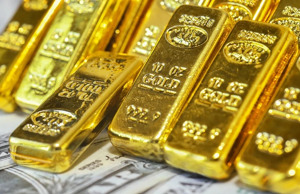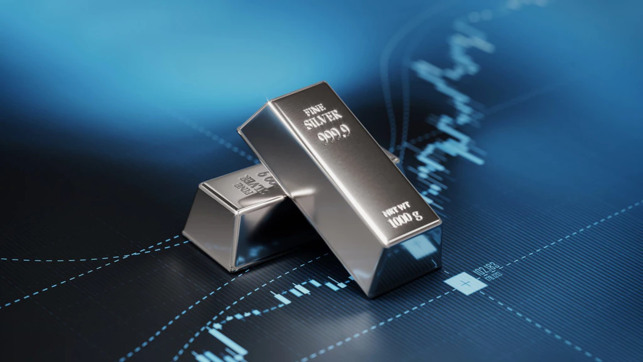Tavex uses cookies to ensure website functionality and improve your user experience. Collecting data from cookies helps us provide the best experience for you, keeps your account secure and allows us to personalise advert content. You can find out more in our cookie policy.
Please select what cookies you allow us to use
Cookies are small files of letters and digits downloaded and saved on your computer or another device (for instance, a mobile phone, a tablet) and saved in your browser while you visit a website. They can be used to track the pages you visit on the website, save the information you enter or remember your preferences such as language settings as long as you’re browsing the website.
| Cookie name | Cookie description | Cookie duration |
|---|---|---|
| tavex_cookie_consent | Stores cookie consent options selected | 60 weeks |
| tavex_customer | Tavex customer ID | 30 days |
| wp-wpml_current_language | Stores selected language | 1 day |
| AWSALB | AWS ALB sticky session cookie | 6 days |
| AWSALBCORS | AWS ALB sticky session cookie | 6 days |
| NO_CACHE | Used to disable page caching | 1 day |
| PHPSESSID | Identifier for PHP session | Session |
| latest_news | Helps to keep notifications relevant by storing the latest news shown | 29 days |
| latest_news_flash | Helps to keep notifications relevant by storing the latest news shown | 29 days |
| tavex_recently_viewed_products | List of recently viewed products | 1 day |
| tavex_compare_amount | Number of items in product comparison view | 1 day |
| Cookie name | Cookie description | Cookie duration |
|---|---|---|
| chart-widget-tab-*-*-* | Remembers last chart options (i.e currency, time period, etc) | 29 days |
| archive_layout | Stores selected product layout on category pages | 1 day |
| Cookie name | Cookie description | Cookie duration |
|---|---|---|
| cartstack.com-* | Used for tracking abandoned shopping carts | 1 year |
| _omappvp | Used by OptinMonster for determining new vs. returning visitors. Expires in 11 years | 11 years |
| _omappvs | Used by OptinMonster for determining when a new visitor becomes a returning visitor | Session |
| om* | Used by OptinMonster to track interactions with campaigns | Persistent |
| Cookie name | Cookie description | Cookie duration |
|---|---|---|
| _ga | Used to distinguish users | 2 years |
| _gid | Used to distinguish users | 24 hours |
| _ga_* | Used to persist session state | 2 years |
| _gac_* | Contains campaign related information | 90 days |
| _gat_gtag_* | Used to throttle request rate | 1 minute |
| _fbc | Facebook advertisement cookie | 2 years |
| _fbp | Facebook cookie for distinguishing unique users | 2 years |
Engagement Ring Prices Are Getting Higher – Here’s Why

Gone are the days when you could stroll into a jewellery shop, pick out a beautiful engagement ring, and leave without feeling like you needed to take out a second mortgage. In the UK, engagement ring prices have climbed sharply in recent years, and the upward trend doesn’t look like it’s stopping anytime soon. While there are multiple reasons behind this price surge, the biggest factor is staring us right in the face: gold prices have gone through the roof.
Let’s break down why this is happening, how it impacts couples planning to propose, and what options are out there for those wanting to balance tradition and budget.
The Link Between Gold Prices and Engagement Rings

1) Historical gold price trends
Gold has been a symbol of love, luxury, and stability for centuries. However, the price of this precious metal has been anything but stable. In the early 2000s, you could buy gold for around £200–£300 per ounce.
Fast forward to 2025, and gold prices have soared past £2,400 per ounce, sometimes even brushing close to £2,500.
That’s more than a 700% increase in just two decades
This meteoric rise hasn’t gone unnoticed by jewellers and buyers alike. Rings that once felt “affordable” now seem like luxury investments.
2) Gold price surge since 2020
Since the COVID-19 pandemic, the global economy has been hit by waves of uncertainty. Investors have flocked to gold as a “safe haven” asset to protect their wealth during turbulent times. Inflation fears, supply chain disruptions, and geopolitical tensions have all contributed to this gold rush.
What does that mean for your dream ring? Essentially, if you’re buying a ring with a significant gold content, you’re directly paying for this investor-driven price hike.
3) Impact of gold weight on ring prices
When choosing a ring, most of us focus on the stone first — the bigger, the better, right? But the band that holds it all together plays a massive role in the final price tag. The heavier and thicker the gold band, the more it costs. Even slim, delicate bands carry enough gold to make a surprising dent in your budget when prices are high.
Designs that once featured wide, solid bands are now often slimmed down to keep costs down, but this can affect durability and aesthetic appeal.
How Much Have Engagement Ring Prices Increased in the UK?

Average spend on engagement rings in the UK
A decade ago, the average Brit spent around £1,500 on an engagement ring. These days, that figure has ballooned to around £2,500–£3,000, with Londoners and urban buyers often spending £4,000 or more.
Interestingly, while some might think this increase is purely down to luxury tastes, much of it is driven by raw material costs, namely, gold.
Breakdown of price increases since 2005
Compared to 2005, engagement ring prices have jumped by around 60–70%. While diamond prices have certainly played a role, the soaring price of gold is the major culprit behind this surge. The metal content alone can now account for up to 40% of a ring’s overall price.
Differences between plain bands and diamond rings
Plain gold bands were once the go-to for those seeking simplicity and affordability. But these “simple” options have experienced price increases of over 100% in some cases.
For diamond rings, the situation is even more complex, you’re paying more for both the stone and the gold. Rings with larger or multiple diamonds set in thicker gold bands can now cost small fortunes. Both gold and diamond prices have seen an increase over the last few years.
Other Factors Driving Up Prices

1) The diamond market and ethical sourcing
Lab-grown and ethically sourced diamonds have become increasingly popular among UK buyers who want to ensure their ring aligns with their values when picking out an engagement ring.
However, these stones often come with higher certification and production costs, which get passed on to the customer.
2) Design trends and customisation
Couples today want rings as unique as their love stories. Custom-designed settings, vintage-inspired styles, and special engravings are all in demand, and these features push prices up even further.
Customisation doesn’t just cost more in materials; it involves extra hours of design and craftsmanship.
3) Branding and the “Instagram effect”
Social media has transformed proposals into viral events, putting pressure on couples to go bigger and flashier. Big jewellery brands know this and market heavily to the “Instagram generation.”
Limited collections, celebrity collaborations, and the illusion of exclusivity all encourage buyers to spend more, often far beyond their initial budget.
Why More Brits Are Turning to Pre-Owned Options

Sustainability becoming mainstream
In an era when environmental and ethical considerations are at the forefront of shopping choices, pre-owned jewellery has become an appealing alternative. By choosing pre-owned, couples reduce the demand for newly mined gold and diamonds, which helps to lower their carbon footprint.
Rising popularity of vintage styles
There’s a certain charm in knowing your ring has a story before you. Vintage and art deco designs have made a massive comeback, offering a character and uniqueness that many new rings can’t match.
Additionally, vintage rings often feature higher-quality craftsmanship and thicker gold bands, providing excellent value in today’s market.
Engagement Rings vs. Wedding Rings: British Traditions
When each ring is given
In the UK, engagement rings are traditionally presented during the proposal, that iconic “down on one knee” moment. Wedding rings, on the other hand, are exchanged during the wedding ceremony to symbolise lifelong commitment.
Finger traditions in the UK
Most Brits wear their engagement and wedding rings on the fourth finger of the left hand, a tradition dating back to ancient Rome. It was once believed this finger contained the “vena amoris” — the vein of love, running straight to the heart.
The Emotional and Financial Balancing Act
Rising engagement ring prices present a dilemma for modern couples. On one hand, gold and diamonds represent love and lifelong commitment. On the other, spending a huge chunk of savings on a ring might not align with practical or future financial goals.
Many couples are finding creative ways to honour tradition without emptying their wallets, such as opting for smaller stones, alternative metals, or focusing on meaningful design rather than size.
Conclusion
Yes, engagement rings in the UK have become considerably more expensive – but that doesn’t mean your proposal has to feel like a financial mountain to climb. By understanding the real drivers behind the rising costs, especially the skyrocketing price of gold, you can make smarter choices that suit both your heart and your wallet.
Exploring pre-owned rings, considering alternative designs, or simply focusing on what the ring symbolises rather than its price tag can all help keep the magic alive without the stress. After all, it’s not the size of the rock or the weight of the gold that defines your love, but the commitment and shared journey it represents.


















